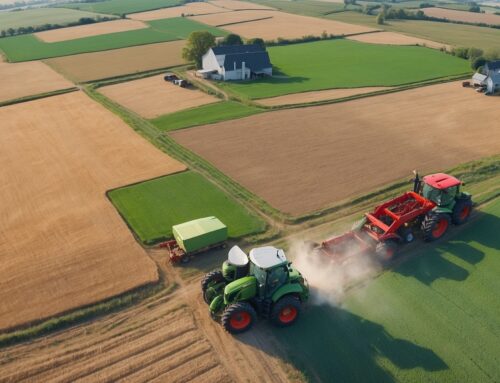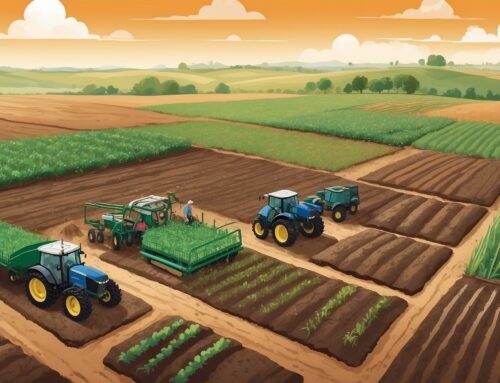Howdy, partners in precision farming! It’s time to get futuristic—not just next harvest futuristic, but the “What’s going to happen when we’re long gone?” kind of futuristic. Because, friends, soil moisture sensors are just the beginning. Yup, that trusty little thing that’s been telling us whether we’ve got a dust bowl or a swamp is about to get some fancy upgrades. The future of soil data is about to go places we never imagined—let’s dive into what’s coming up next.
Data on a Whole New Level
Alright, so we all know that soil moisture sensors give us a pretty good picture of what’s going on beneath our boots. But what if I told you that we’re about to move past basic “water or no water” readings? Picture sensors that are so smart, they don’t just tell you there’s water, but exactly how much each part of the soil likes it, how fast it’s drinking it up, and whether you need to give it a little more nutrition like Grandma’s secret pie recipe.
One word, folks: nutrients. Nutrient sensors are coming, and they’re gonna tell us whether our plants are living the high life or just scraping by. Imagine getting real-time readings on nitrogen, phosphorus, potassium—all the goodies that keep our crops healthy and happy. No more guessing, no more waiting for lab tests that take longer than watching a corn stalk grow. The next-gen soil sensors will tell us right away, “Hey, buddy, your plants are hangry. Time to feed ‘em!”
Sensors That Talk to Each Other
Now, we’ve all heard about soil moisture sensors and drones and GPS systems, but what happens when they all get together for a meeting? This isn’t just a staff meeting in the barn where someone forgot to bring coffee. This is a real-time, 24/7 huddle where the sensors, satellites, drones, and your tractors are all chatting with each other.
Let’s say your moisture sensors notice that certain spots are a little drier than others, and your nitrogen sensors give a low reading in that area. Before you even have time to get out of bed, your drone might already be on the way, getting you aerial views while your smart irrigation is making precise corrections. We’re talking self-aware farms, folks. It’s like “The Jetsons,” except with less flying cars and more flying solutions.
And that’s not all. These data-savvy sensors will also be connected to big ol’ databases that’ll help you compare your soil’s health with the neighbor’s—anonymously, of course. We’re not starting any “whose soil is better” feuds here (unless it’s in good fun). But imagine if you could see how others with similar conditions are solving their challenges, all from data shared between systems? It’s basically the ultimate soil gossip column, and we all benefit from it.
Soil Sensors and the Climate Question
Ah yes, climate change—the topic that makes us all hold our hats and wonder what’s next. Well, soil data sensors might actually help answer some of those questions. Think of soil as one giant sponge—except instead of soaking up water, it’s soaking up carbon. That’s right, the carbon that’s floating around in our atmosphere could be stored right under our crops if we manage things well.
The next wave of sensors will be designed to track carbon sequestration. In layman’s terms, they’ll be measuring how much of that pesky carbon dioxide is getting pulled out of the air and stuffed back into the dirt where it belongs. This could be huge, not just for reducing emissions but for the “carbon credits” market that everyone’s been whispering about lately. If you’re storing carbon, you could eventually get paid for it—meaning your soil moisture sensor just got a promotion.

Enter the AI: Predicting Tomorrow’s Soil Today
We’re already using predictive analytics to forecast when to water and how much, but artificial intelligence is about to make this stuff next-level cool. Imagine an AI assistant—let’s call her Agatha AI. Agatha knows your soil better than you do, because she’s looking at data from satellites, sensors, and even historical weather patterns. She’s thinking, “Oh, looks like we’re about to have another one of those late July heatwaves…better prep the east field for a little extra irrigation.”
Agatha will not just tell you what’s going to happen but explain why. “Your soil in that field is a little compacted from last season’s overgrazing—let’s loosen that up with a till.” This is the kind of insight that, frankly, makes me want to shake a sensor’s hand. We’re talking predictive power that could change the whole game—less guesswork, less waste, and fewer “I wonder why that happened” moments.
So What’s the Catch?
Now, with all this talk about futuristic sensors and self-aware irrigation, I know some of y’all might be thinking, “What’s it gonna cost me?” And look, I’ll be honest—it’s not gonna be as cheap as a sack of feed. These technologies are getting more affordable, but they’re still an investment. The good news is, once you get these systems in place, you’re looking at real savings on inputs, and in some cases, real money coming back at you in the form of better yields or even those carbon credits I mentioned.
The future of soil data isn’t just about more gadgets and gizmos. It’s about taking the knowledge that’s already out there and turning it into something we can use day in and day out, making sure our fields are not only productive but sustainable for the next generation. So, keep an eye on that trusty soil moisture sensor—it might just be the first step toward a whole new way of looking at our land.
Now, if you’ll excuse me, I’ve got a drone to catch. I swear it’s been sneaking off to watch the neighbor’s soybean field again…





